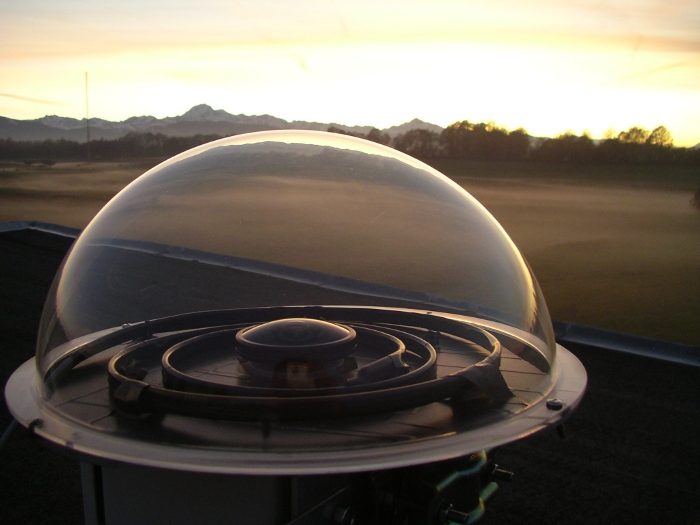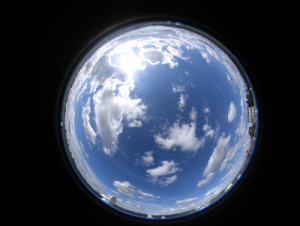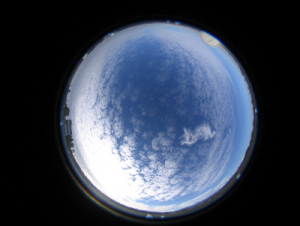RAPACE – Total Sky Imager
RAPACE (Récepteur Automatique Pour l’Acquisition du Ciel Entier)
Objective :
RAPACE a total sky imagery system which enables us to visualize the whole sky (2pi steradians) above the CRA site. It routinely stores the local cloud cover as seen from the ground.

Observation temps réel (most recent image available):

Principle :
This system consists in the association of a digital camera with a large angle lens (fish-eye). The latter is protected by a plexiglas dome and controlled by a thermostat which keeps the temperature nearby the lens around 10°C, in order to avoid condensation. RAPACE is installed on the roof of CRA main building (43.12845°N, 0.36628°E). It was designed with the precious help of Sylvain Rondi and Eric Pique. It is monitored by Solène Derrien, Antoine Vial and Marie lothon.
Examples of observations :


Acquisition mode :
RAPACE has been continuously operated at CRA since February 2006, with visible daytime and nightime images every 15 minutes (before February 2017) or 5 minutes (since then). During the night, a longer 34 s pause is made, for astronomy application. The acquisition frequency can be increased anytime in the context of field experiments or specific demands, with the possibility of making movies. Consequently, for some days, the time interval between each image has been set to 10 minutes, 1 minute or 30 seconds.
Image processing :
An algorithm (named ELIFAN) has been developed by Paul Barneould and evaluated by Omar Gabella, in order to estimate the cloud cover from each image. It is based on Red/Blue ratio thresholding, both with an absolute or a differential (with a clear sky library) approach. See Lothon et al. 2019 (AMT journal) for more details on ELIFAN.
